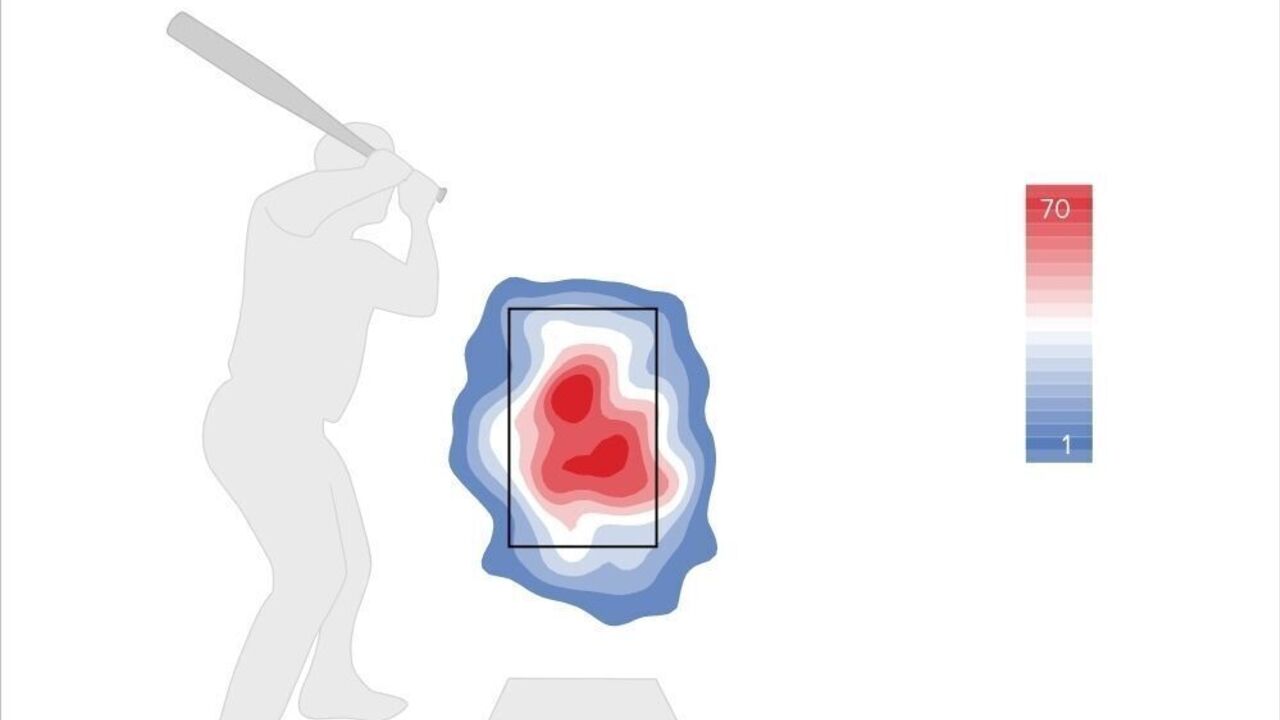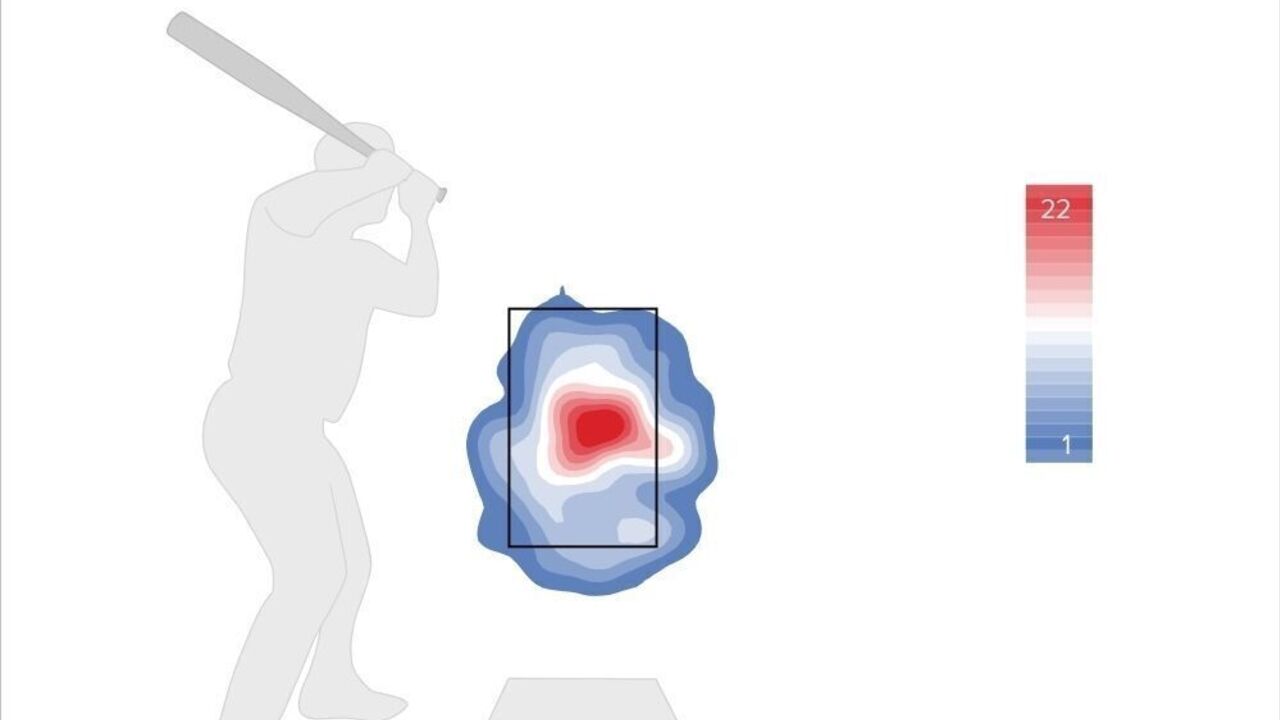How Danny Jansen quietly became a premier offensive catcher
TORONTO – At some point in a whirlwind 2021 for the nomadic Blue Jays as they bounced from Florida to Buffalo before finally settling back in Toronto in late July, Danny Jansen also started making moves.
Jansen's major-league career to that point had been a bumpy ride, a string of three-plus occasionally promising but often frustrating seasons. By the end of the pandemic-shortened 2020 campaign, Jansen owned a career .208 batting average through 181 games. His slugging percentage sat at .370. Even by the catcher position's lower offensive standard, Jansen's numbers left something to be desired, particularly for a supposed bat-first catcher whose offensive upside was compelling enough that he was once considered the third-best prospect in the Blue Jays organization behind only Vladimir Guerrero Jr. and Bo Bichette.
The sample was small, to be sure, but Jansen's struggles at the plate in the early days of his big-league career seemed to suggest he was perhaps trying to do too much.
So, rather than continue trying to be the more "complete" hitter he was in the minor leagues - the kind who hit .323 across three levels in 2017 and earned above-average grades on his hit tool from FanGraphs and MLB Pipeline - Jansen decided to lean into his natural tendencies at the plate: pulling the ball and hitting it in the air.
"I think that one of my strengths has always been to pull the ball," Jansen told theScore ahead of a mid-June tilt against the Red Sox. "And (I) struggled in the big leagues for a couple of years, trying to maybe do some things, going everywhere all over the field instead of honing in on what my strength is.
"I think that I've learned a lot about myself and throughout my career, for sure. Through some success. Through struggle. (I've been) taking the struggle the right way, and then trying to turn it around and figure some things out."
Now, with the 2024 All-Star break nearing and Jansen in his seventh big-league season and months away from free agency, he's indeed figured some things out. In deciding to reorient his approach toward his strengths, Jansen effectively reshaped his career, making good not only on the plus offensive potential scouts raved about during his minor-league days, but quietly morphing into a premier power hitter - a distinct if unrecognized danger lurking in a Toronto lineup anchored by those second-generation stars.
Believe it or not, Jansen's actually posted a higher isolated power (.238) than Guerrero Jr. (.211) over the last four seasons, and Vladdy memorably walloped 48 homers in 2021 and finished second in American League MVP voting. Jansen's OPS (.794) and park-adjusted numbers (120 wRC+) are virtually identical to Bichette's over that span (.792, 120). And with 48 home runs in his last 815 at-bats, Jansen's been leaving the yard at an almost-elite pace (17 AB/HR) for years, more frequently than both Yordan Alvarez and Pete Alonso in 2024, for instance.
An important caveat is that injuries have dogged Jansen over the last few years, limiting him to no more than 86 games played in any of the past three full seasons. He began the 2024 campaign on the injured list with a fractured bone in his wrist, and it remains to be seen whether this season will be his first reaching 400 plate appearances. However, when Jansen's healthy, he's ultimately been as dangerous as almost anyone wearing a Toronto uniform since 2021.
"I'm definitely not (trying) to get too consumed in the numbers," Jansen said. "(I'm) just trying to go up there and (perform) however I can, help the team win. And if that's doing some slugging, then so be it."
So be it, indeed. Few hitters in baseball have slugged more efficiently than Jansen since he embraced his new approach, one he noted has "freed (him) up mentally a little bit." And while he'll likely never post an average that approaches his cumulative .271 minor-league mark, Jansen's overall numbers - and the shape of his batted-ball profile - evince a hitter who's both extremely intentional about his pull-heavy, fly ball-heavy approach and extremely effective at executing his plan.
"I think he's just kind of become a master of his craft," said Blue Jays assistant hitting coach Matt Hague. "How he's working now is a testament (to) how well he knows himself, and then what he's looking for. He takes advantage of the things he's trying to execute, and he does it consistently."
Jansen's consistency can't be overstated. By now, the merits of pulling the ball in the air are extremely well known; a pulled fly ball is the most valuable kind of batted ball there is. Yet even with more hitters trying to elevate to the pull side - pitchers are meanwhile trying to avoid those types of batted balls - Jansen's consistency stands out. Since 2021, Jansen's rate of pulled fly balls ranks second in baseball behind only Nolan Arenado (minimum 2,000 pitches seen).
Achieving that consistency is a multi-factored process, one that comprises plenty of cage work with another of Toronto's assistant hitting coaches, Hunter Mense, with an emphasis on having a swing path that allows Jansen to "play out front," as Hague put it. In other words: To make contact with the ball out in front of the plate, which leads to a lot of pulled balls and higher-quality contact.
"He doesn't want to play out front with a bad swing path," Hague said.
Pulling the ball with Jansen's regularity also comes down to swing decisions. And while Jansen's always been a disciplined hitter with a keen sense of the strike zone, one of the critical adjustments he's made over the last few years is laying off pitches that are difficult to pull even if they're inside the strike zone - specifically pitches down and away:


This year, Jansen owns the lowest in-zone swing rate of his career, his attack zone apparently narrowing even further in his perpetual pursuit of optimized contact.
"(I'm) just trying to get the ball in the heart of the plate," Jansen said. "It's a place where I can do some damage. And (hitting the ball) in the air to the pull side has always been something that I've thought I've been pretty decent at. So I just want to continue to do that."
In any event, his consistency - in terms of both process and results - has turned Jansen not only into one of the most reliable power sources in Toronto's lineup, but has also distinguished him among his peers at the catcher position: his slugging percentage since 2021 trails only Salvador Perez's among catchers, while his isolated power ranks first by a considerable margin. Jansen actually has more home runs than Adley Rutschman over that span despite registering 553 fewer plate appearances. In total, on a per at-bat basis, Jansen has inconspicuously been one of the game's best offensive catchers for years now.
Understandably, on account of all his injuries, Jansen's transformation hasn’t resonated throughout the broader MLB world. But the Blue Jays are acutely aware of how dangerous he's become. Jansen's clearly supplanted Alejandro Kirk as Toronto's top catching option, starting behind the plate in almost two-thirds of games since coming off the injured list April 16.
Meanwhile, in their persistent hunt for more offense, the Blue Jays recently bumped Jansen into the No. 2 spot in their lineup, marking the first time in his big-league career that he's been a regular within the top of the order. Although he's yet to find his footing in that role - he's generally struggled since the end of May - Jansen's still been one of Toronto's most dependable and dangerous hitters this season, ranking second among team regulars in wRC+ (114) and third in isolated power (.182).
That should come as no surprise to anyone following the Blue Jays closely in recent years. While Toronto's current, rapidly closing competitive window has been colored by so much disappointment and underperformance, Jansen's offensive emergence - albeit in fits and starts - has been a welcome, desperately needed counterbalance. And by embracing that which comes naturally to him at the plate, Jansen's unwittingly become a prototypical modern-day hitter and one of baseball's most complete catchers.
"I think he's just always trying to get better," Hague said.
Jonah Birenbaum is theScore's senior editor, multimedia. Follow him on X.